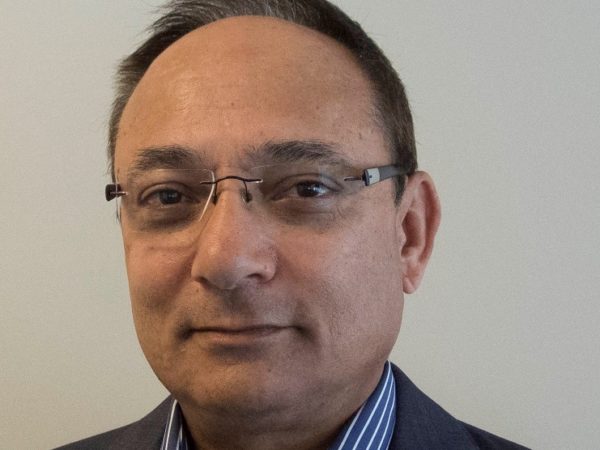
The encore. What happens when you are successful enough to have sold your company for a truckload of cash but too young to retire?
When Rob Bakshi sold Vancouver-based CCTV firm Silent Witness to Honeywell in 2003 for $90-million, he was just 44 years old. For Bakshi, who made his way from rural India when he was just 13 and worked a series of grinding jobs to establish his family in Canada, laying on a beach or putting around on a golf course simply didn’t fit his personality profile.
The inevitable offers to take a board position or consult came along, but Bakshi knew he had a sequel in him. That opportunity came along in the form of Moimstone, a company he was introduced to in 2009. Bakshi an opportunity in the company, which has since changed its name to Apivio Systems, to transition from the hardware segment of the VOIP business to a more lucrative role as a software provider. Cantech Letter sat down with Bakshi to talk about Apivio’s transition, which he estimates is still in its early days.
Rob, can you tell us a bit about the history of Apivio?
Sure, the company was founded in year 2003 in South Korea by Mr. C. W. Lee. He recognized an opportunity to develop Voice over Internet Protocol (VoIP) telephones (terminals) to telephone service providers (Telco’s and Cable providers) in Japan and South Korea as they were planning to roll out this service to their small business and residential customers. With various trials and errors, the company had its breakthrough in 2008 with meaningful sales to Korean Carriers and later to such global players as NTT (Nippon Telephone and Telegraph) in Japan.
How did you get involved with a Korean based company?
After the sale of Silent Witness to Honeywell in late 2003, I was frequently presented with technology companies for investment, or to be an advisor or serve on the board of directors. My criteria was to look at only those companies that had achieved ten million dollars in sales or one million dollars in profit. In my experience, most of the tech companies don’t ever get to this level and those that do have a much higher probability to scale up to higher levels. There are a lot of “neat” ideas when it comes to tech companies but unless you get extremely lucky, it’s a tough grind to finish a product and establish a sizable market. So, I did not want to invest my time and energy into creating something but instead, in expanding something. During the summer of 2009, a stockbroker who knew me from the Silent Witness days introduced this company to me. The company had achieved $6.3M sales in 2008 and was on the run rate to break through the magic $10M in revenue for 2009. After my due diligence and trip to South Korea, I was convinced that a paradigm shift is underway; telephone lines will die and voice will be part of data in the new digital and wireless world. This company had a head start and a good chance to be a global player.
VoIP has been around for the past fifteen years, what was so special about this technology?
Yes, VoIP has been a bastardized term and there have been many casualties. Many of them were too early to the game and others were not able to achieve scale. Having said that, VoIP is a multi-billion dollar market that is serviced by startups to multi-billion dollar companies; everyone trying to deliver voice over data channel in their own unique way. Apivio’s specialty is in three areas.
1. The first is making carrier grade handsets that are able to work with their backend equipment. This is years of learned knowledge that continues to enhance with our growth.
2. The second specialty is in Wi-Fi voice. After two years of field trials, we have launched world’s first dual band (2.4 and 5.0 GHz) phones in the Korean and North American markets. We had to develop a library of interoperability with hundreds of Wi-Fi routers (Access Points; Aps) through trial and error. Unlike 3G and LTE, there are no universal standards for voice on Wi-Fi.
3. The third area is our Android platform. In 2010, the company provided NTT of Japan with about $50M worth of Android tablets. This was a “one-off” project but it gave us painful lessons on how to develop and work with Android.

How would you characterize the landscape of VoIP in North America?
Generally speaking, VoIP in the non-cellular market is divided into three areas: enterprise market, apps and Centrex. Companies like Cisco, Mitel, Avaya, NEC, service the multi-billion dollar enterprise market. VoIP is also used as an app on a computer, tablet or smart phone. Examples include Skype, FaceTime, plus tens of smaller companies. Finally, Centrex service is VoIP service provided by carriers. Other than AT&T’s limited service to its small business clients, this service has not rolled out in North America as it has in other countries like Japan, South Korea and now some EU countries.
In Canada, don’t Carriers like Shaw and Rogers offer VoIP when you buy a bundle package?
They provide digital voice, which is not pure VoIP. They use an analog terminal adapter (ATA) similar technology used by companies like Vonage and Magic Jack. Shaw and Rogers send a technician to their customer’s premises when converting a Telus or Bell customer for telephone service. The technician installs the ATA and performs various tests. The customer still uses the old telephone handsets that are analog and plugged into the original telephone jack in the wall. Therefore, voice is converted to digital going out but converted back to analog coming back. VoIP is digital end to end.
Do you think carriers ever start offering VoIP service to their customers in North America? It’s only a matter of time but most likely through Wi-Fi interface.
Younger people are much less likely to have a home number because they have grown used to only using their cell phones. Isn’t the home telephone market a dying beast?
I would call it redefining beast. First of all, we all need voice. How it is delivered depends on the medium. Pure 3G and LTE players will depend only on this medium. Hybrid Carriers like Bell and Telus will depend on 3G, LTE but also on their landlines. Cable companies like Shaw will depend on blanketing their area with Wi-Fi for their cable and Internet customers (Comcast recently announced they will do the same). Wi-Fi is the most efficient, reliable, economical, easily scalable, and maintainable that offers the biggest and fastest bandwidth. No one technology or company will get the entire multi-billion dollar market. Instead, customers will have choices when it comes to handsets, technologies, services, features, pricing and operating platforms. I believe most urban areas will be blanketed with high speed Wi-Fi and 3G/LTE would be used for back up and out of urban areas. Finally, the quality of voice on your home and desk phone is totally different from that of the cell phone. Cell phones are hit and miss while the non-cell phones are clear and reliable with long battery life.
But cell phones allow people to make Wi-Fi calls. Why would anyone need to use your Wi-Fi phones?
Cell phones run apps to make a call on Wi-Fi. These are similar to Skype, FaceTime, Rebtel, etc. These apps run in real time on a data terminal to get a solid uninterrupted connection with a router. This is ‘hit and miss’ and voice quality is usually poor. Our Wi-Fi phones are voice first therefore Carrier grade, landline voice quality.
You have some hefty-sized competition. How will a small company like Apivio survive?
By focusing on vertical technology and market niches. We cannot be everything to everyone. We only want to get our small piece of the pie in this multi-billion dollar market that is rapidly growing.
Is your technology patented?
While we have some patents and have applied for more, my interest is in focusing on market share. I don’t want this company to be based on pure research but instead market driven fast growth company.
When will you be profitable?
If you strip out the Canadian office overhead, the company is cash flow positive. As soon as we start filling out the North American purchase orders, this overhead will diminish. Having said that, I believe we must invest in people, process and more R&D in the short term. We need to form a solid base for exceptional growth.
When I look at your financials, although growing, your gross margins are narrow. Are you in the hardware business? The original business of the company was based on hardware margins. Now, as the CEO, I have changed our strategy and product mix to more software. Going forward, as we roll out global sales, I expect for the company to achieve higher gross margins and recurring revenues. We have customers like NEC America and DotComm to prove it.
Is Apivio still a Korean company?
No, when I got involved in 2009, the first thing we did was make this into a Canadian company. They Korean company still named Moimstone is 100% owned by the Canadian company.
Rob, what keeps you up at night?
Managing growth. Our new strategy and direction is bearing fruit faster than I expected. We need to take advantage of this.
Disclosure: Apivio Systems is an annual sponsor of Cantech Letter.
_
Leave a Reply
You must be logged in to post a comment.



 Share
Share Tweet
Tweet Share
Share




Comment